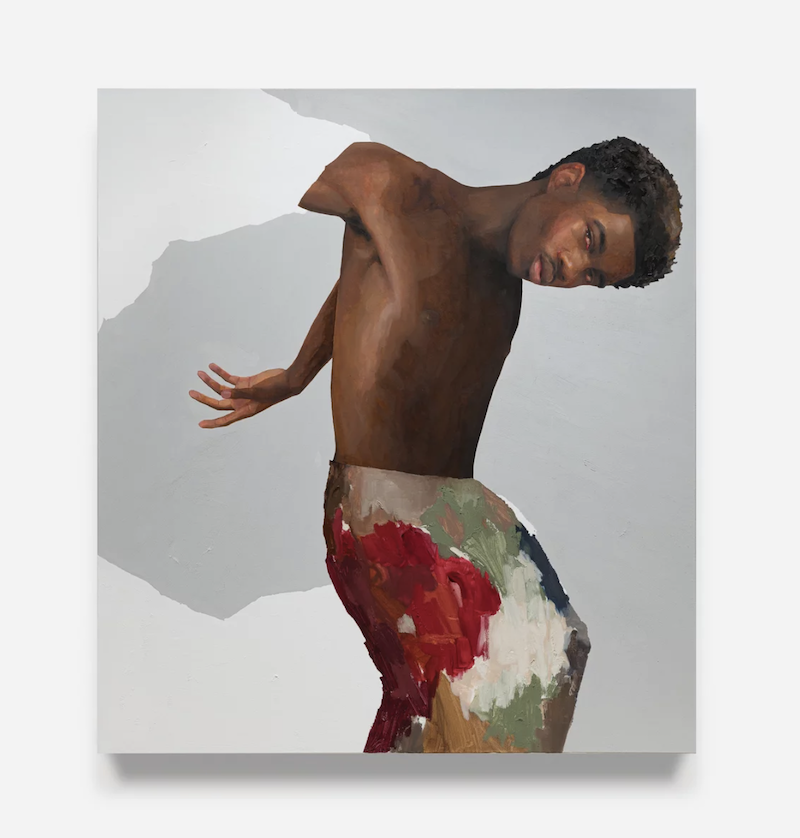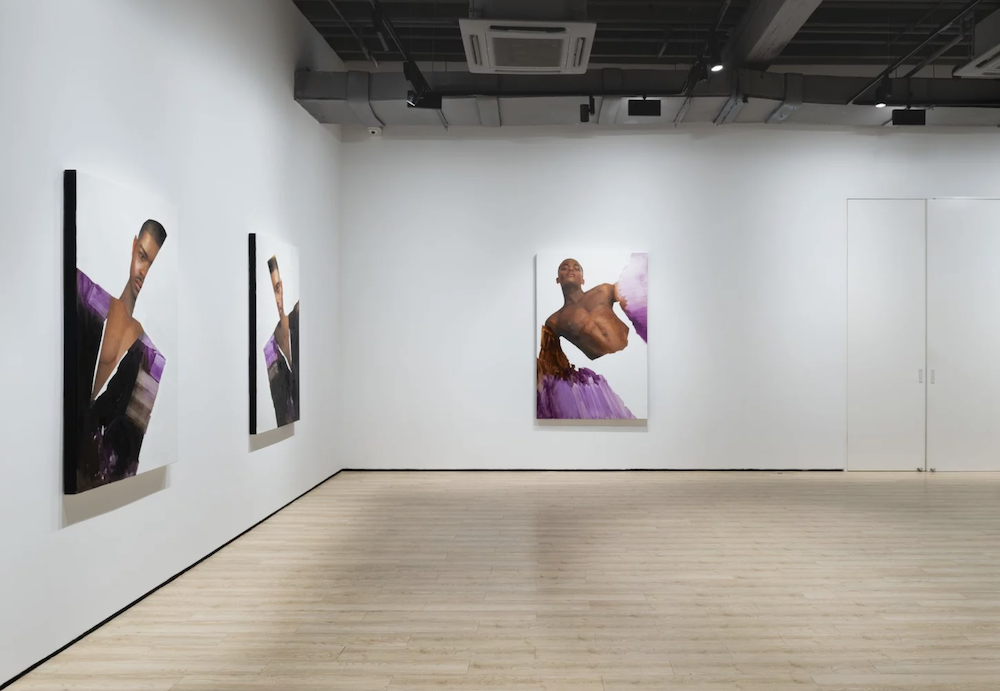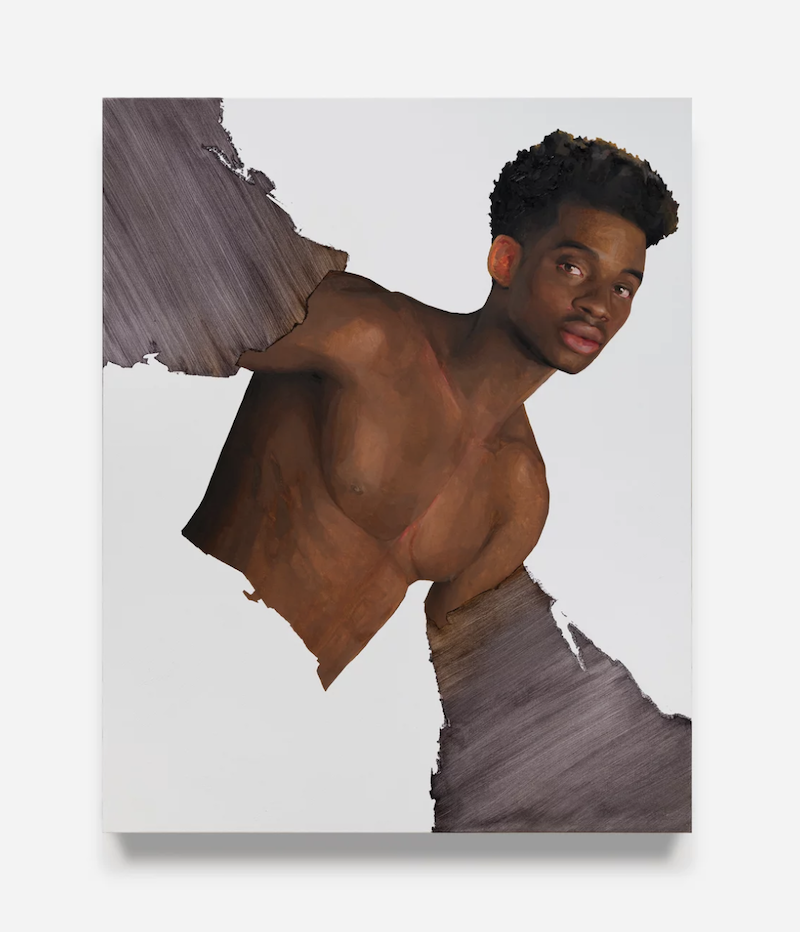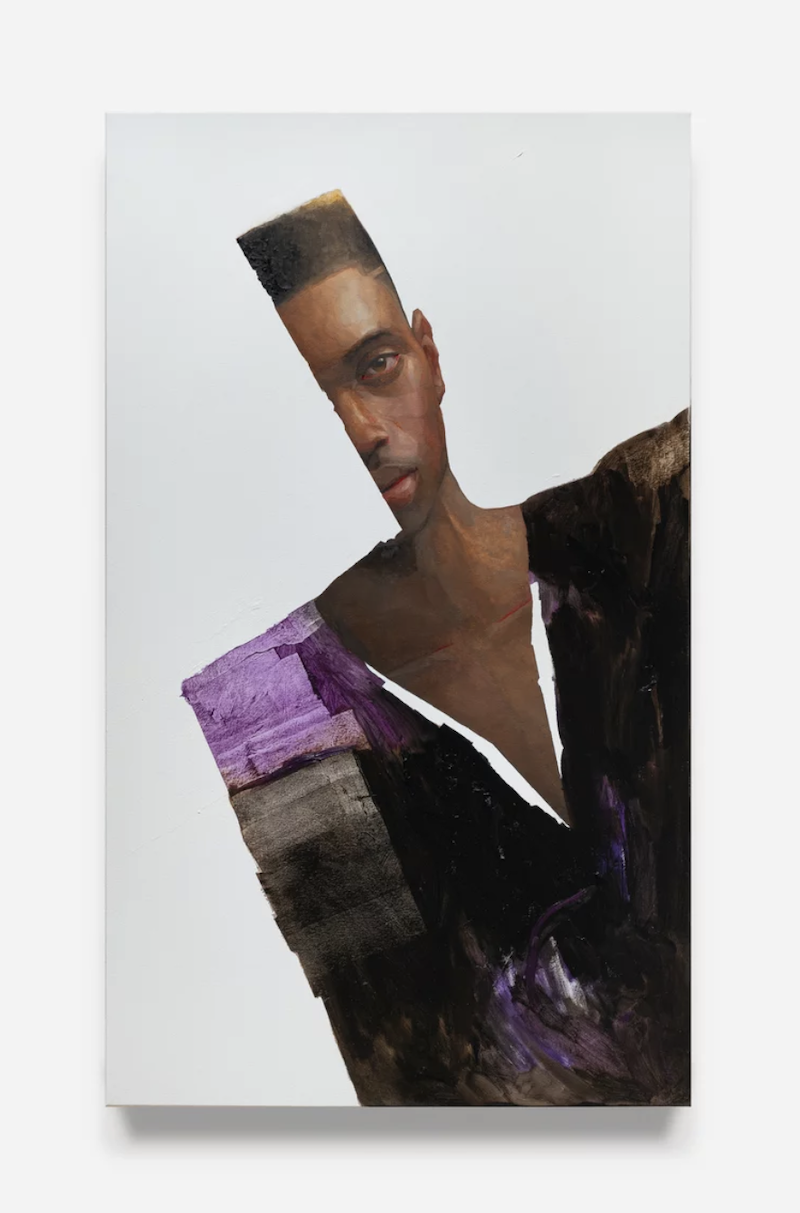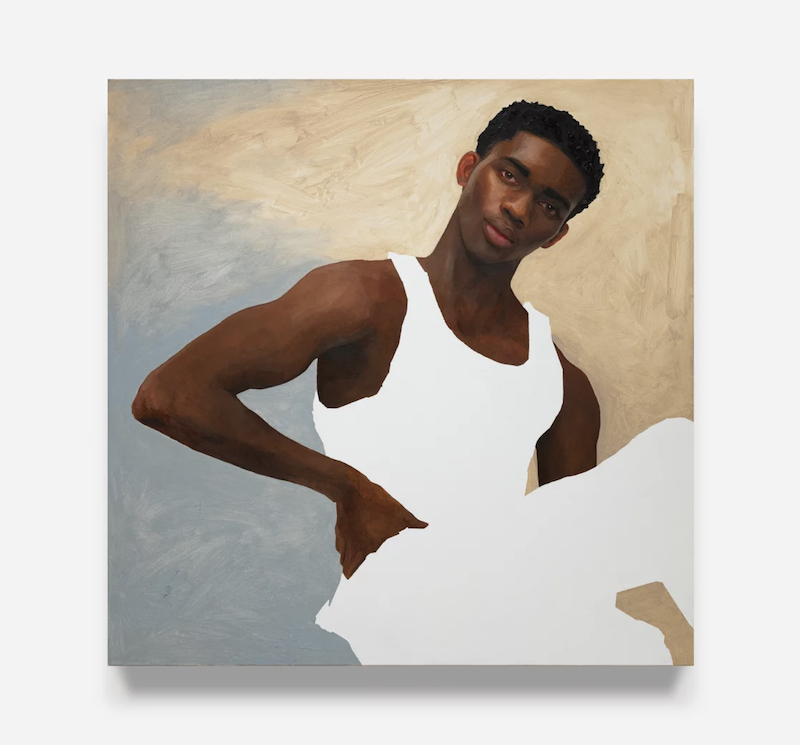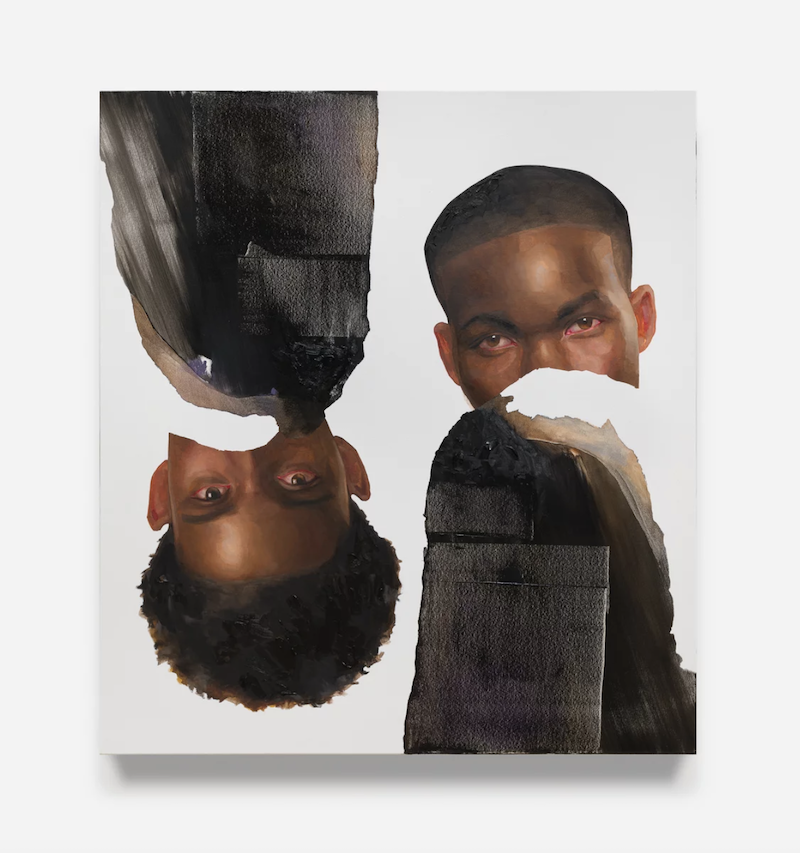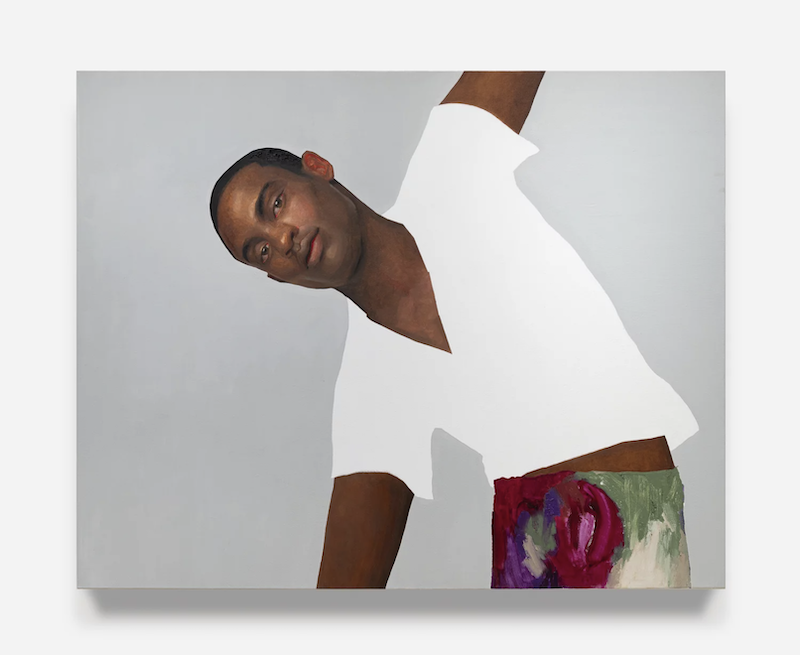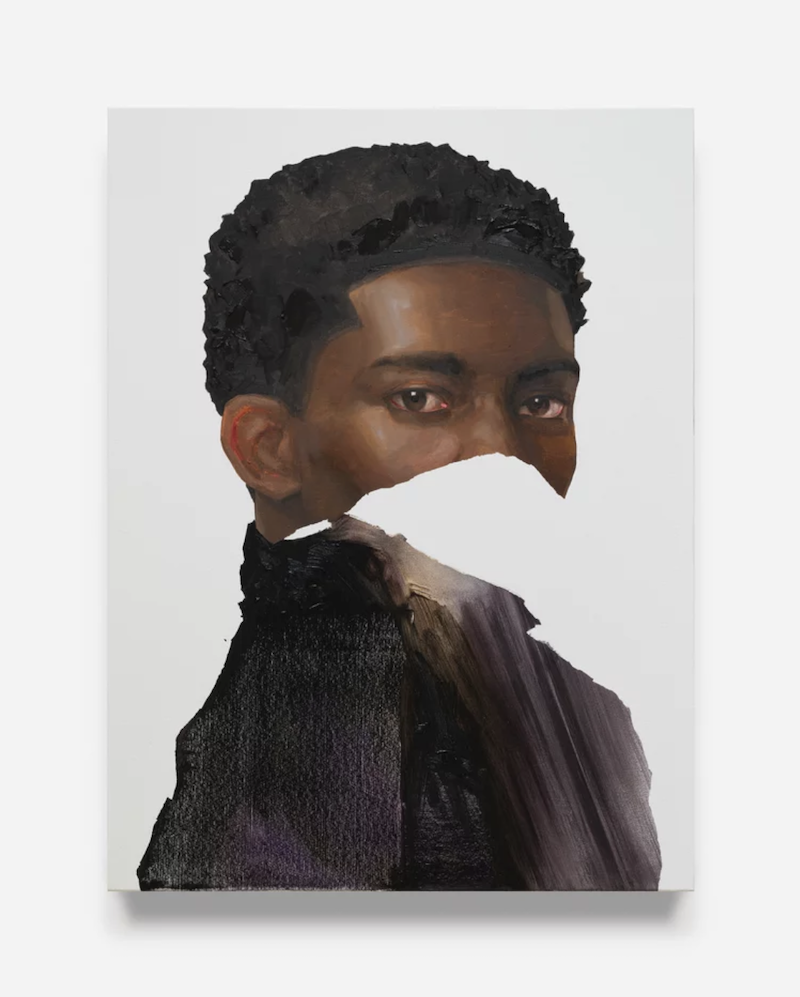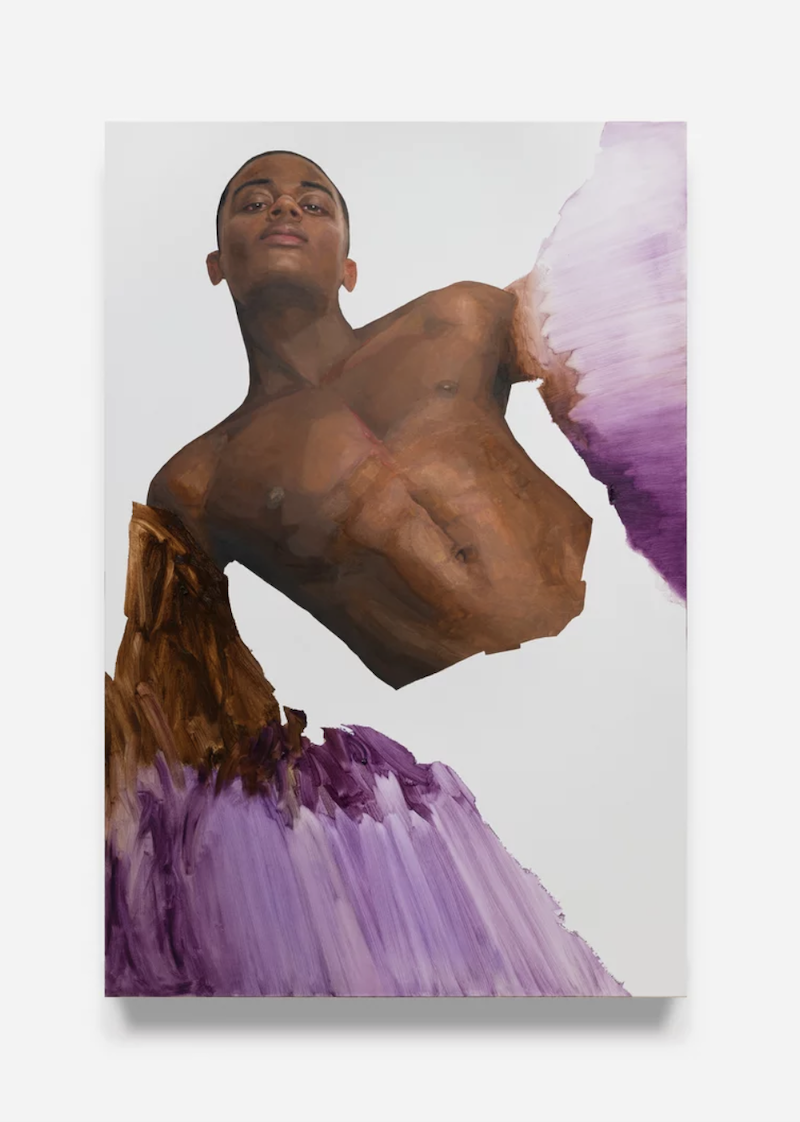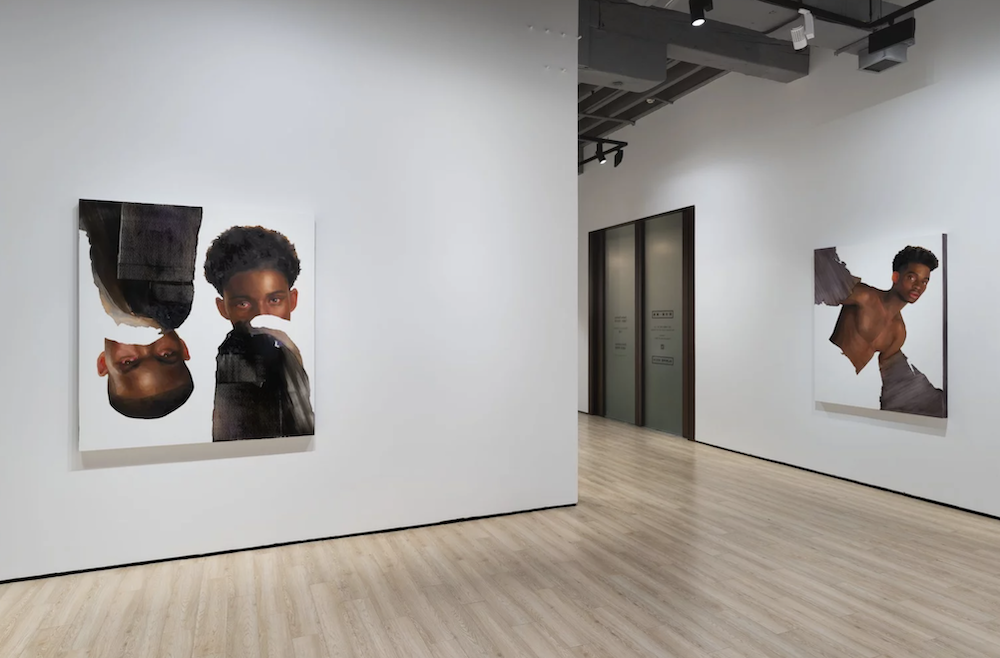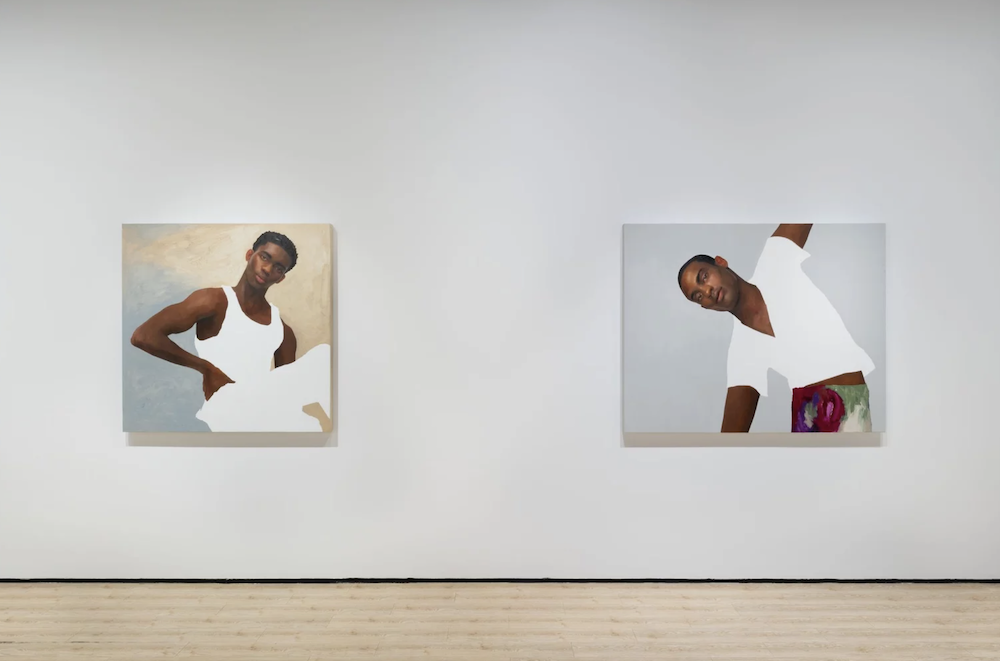In our upcoming Fall 2023 Quarterly, Jux contributor Charles Moore sits down with Xavier Daniels for a special conversation. In the meantime, we wanted to share Moore's essay on Daniels work, on the occasion of his solo show at Almine Rech in Shanghai.
Atlanta, Georgia-based artist Xavier Daniels implores viewers to consider what life might look like without the biases and assumptions that hold them back. In his Shanghai show Absence of Gravity, on view at Almine Rech Shanghai through August 12th, the artist examines what it means for Black men to escape the confines of stereotypes and become their freest selves. Self-agency, brotherhood, and vulnerability are central themes of the exhibition.
The concept of gravity plays an equally central role. Where gravity weighs a person down, the absence of this fundamental interaction allows Black men to consider a life of boundless possibility. To uncover what it means to live without gravity, Daniels has completed a dozen-some works that create a space of openness and growth, showcasing African folklore-inspired pieces that depict men’s mental health. His painted Black male figures, like those featured in his 2022 exhibition Ties that Bind, inspire dialogue surrounding stereotypes and emotionality.
Themes of flight are prevalent in the works. The artist quotes Toni Morrison, citing, “Surrender to the air. You can ride it.” Daniels explains that the wings and feathers of a bird are designed in a special shape known as an aero foil, which forces the air to move faster over the top than underneath. As a result, birds have the option to simply glide midflight—and these birds serve as a metaphor for Black men living without the gravity of stereotypes. To take matters a step further, Daniels reinforces the impact of the male gaze in his works: an assertion of identity and presence, bringing to light a person’s charisma and individuality. In Absence of Gravity, Daniels creates a space of honesty and growth, revealing that Black men can achieve the highest form of freedom—the ability to be their truest selves. Known for his male subjects’ gently painted Black skin, Daniels instills in his figures a sense of buoyance: birdlike and free. Divergent masculinities, shades of light, “Black boy joy”: Daniels crafts his subjects with military exactness. His half-portraits symbolize mental health, revealing how a Black man might not feel entirely whole without the freedom of self-expression. Inspired by the shape of African masks—for instance, a Pende deformity mask in which the face is bisected into black and white halves—the artist experiments with what it means to live under a façade.
Color symbolism is integral. Often, Daniels blends purple and gray, the latter symbolizing sophistication and intelligence. The former is devotional and mysterious, an emblem of royalty, uplifting the public while conveying respect. Purple dye, once worth more than its weight in gold, was previously something only a royal family could afford; in this way, it offers an escape from reality—exuding self-knowledge and acknowledging a deeper understanding of a person’s interior life. Dark and rich, the artist believes the color helps to liberate and enlighten his Black male subjects, further allowing them to take flight. His use of white paint represents an additional Biblical color symbolic of innocence, purity, and redemption. This paint selection highlights an overarching sense of vulnerability, inviting all Black men to anchor themselves in freedom. Traces of burgundy, meanwhile, point to dignity and transformation.
The artist’s compositions are a visual puzzle. Most appear to move beyond the confines of the canvas; a figure might leap or float, soar or pull, outside of the canvas frame. Heads and bodies twist, and so Daniels allows his subjects to move in a manner that resists gravity. Daniels crafts each painting with careful precision—focusing on shapes, and leveraging geometry to visually solve problems, restoring balance when needed.
Negative space is critical to the artist’s process: intricate posing, inverted faces, and semi-crafted figures leave the full picture to the imagination. A former firefighter, it was the sound of emergency sirens that made Daniels realize that ambiguity—negative space and those parts of the canvas left to the imagination—is just as impactful as the more straightforward aspects of his paintings. This ambiguity gives the viewer the same sense of agency as the artist’s subjects, allowing them to make their own decisions. Throughout Absence of Gravity, Daniels underscores the power of freedom—specifically, the freedom of the self. Yet in each work, the artist asks the viewer to consider whether they are looking at a mask or a real person. Is the subject living with or without gravity? Leveraging jagged, angular lines not unlike those Picasso used in Les Demoiselles d’Avignon (1907), Daniels pays homage to the structural clarity, expressive intensity, and fragmentation of African art. The viewer won’t want to look away. — Charles Moore, writer, curator, and art historian



